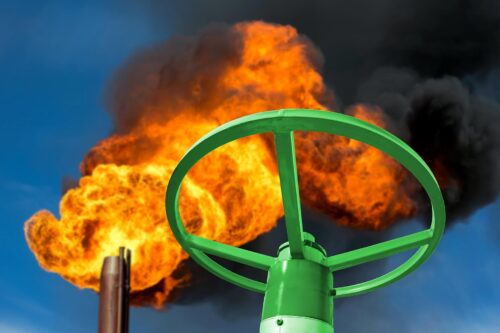
Calculating Parity Between Gas and Coal Life-cycle Emissions
See for yourself how methane swings the scales
US gas consumption has increased 40 percent since 2010, while coal use has decreased over 50 percent. This reversal of fortunes has been wrongly endorsed on climate grounds, with claims that natural gas is a cleaner fuel.
While coal trumps gas when it comes to only CO2, leaky gas can be on par with coal’s net greenhouse gas emissions (GHGs). A recent study found that, gas can trump coal emissions when as little as 0.2 percent of gas is wasted in the form of methane emissions from equipment and pipelines — or through intentional releases like flaring. A growing network of satellites and sensors is spotting methane plumes at frequencies and rates that indicate many natural gas systems far exceed this low threshold. Because methane leakage from gas systems can tip the scales, RMI has created a calculator that allows users to estimate parity between gas and coal based on site-specific assumptions.
Natural Gas Can Cause As Much Climate Damage as Coal
The bad news is that substituting leaky gas for coal does not necessarily deliver climate benefits. The good news is that cutting methane emissions from the gas supply chain is relatively straightforward and can deliver immediate, substantial global climate action.
For example, the International Energy Agency (IEA) finds that there is a “clear opportunity” to cost-effectively mitigate oil and gas industry emissions through ready-to-implement measures. These include tackling methane emissions, eliminating all non-emergency flaring, electrifying production facilities with low-emissions power, and expanding the use of hydrogen from low-emissions electrolysis in refineries. The IEA’s results are underpinned using RMI’s Oil Climate Index Plus Gas (OCI+) that concludes greater emissions visibility, sound policy adoption, and targeted market activation can help operators fix leakage.
Introducing a New Calculator to Evaluate Gas and Coal Emissions
To compare gas and coal life-cycle emissions, decision makers need to account for site-specific inputs. Our new calculator guides users to evaluate specific gas and coal resources and operations worldwide to determine their emissions parity.
Two different scenarios are presented below to showcase different shorter-term results, using 20-year global warming potentials. First, we compare West Virginia coal and gas operations and find that if the state’s gas systems’ methane leakage rate is at 1.4 percent, their emissions are on par with West Virginia coal.
Plot of Varying West Virginia Gas Leakage Rates Compared to West Virginia Coal System Life-cycle GHGs
Source: Gas vs. Coal Calculator.
In the second case, we compare Texas Permian liquefied natural gas exported to China to replace coal mined in Liaoning Province. Given this resource’s high sulfur content and the nation’s relatively low scrubber efficiency, if the Permian gas China imports has a methane leakage rate of just 0.2 percent, there is no near-term greenhouse gas (GHG) emissions benefit for making this substitution. As such, it is critical that Permian gas be essentially leak free if its substitution for Liaoning coal is to provide climate benefits.
Solving the Methane Problem
Atmospheric GHG concentrations are rising faster than during any other time in recorded history. Between 2020 and 2022, scientists observed record annual increases in methane levels. The climate is rapidly changing and leaking methane is making the situation even worse.
If natural gas (and oil) is in the energy mix, methane leaks can happen at anytime, anywhere. Methane is estimated to be responsible for one-half of the oil and gas sector’s GHG emissions.
One simple solution to reducing the ongoing risks of methane leakage is to correct the misconception that natural gas is necessarily “cleaner” than coal to generate electricity — or any other energy usage. Emissions-free electricity generation from wind and solar is already economically more attractive than gas power and does not carry the additional climate burden of methane leakage that can push gas power emissions much higher than those from coal plants.
Beyond that, to the extent natural gas remains a part of the energy mix, it will take technology, regulations, and market mechanisms to make methane visible and stop leakage. Fortunately, these solutions are at the ready. The International Energy Agency finds that tackling methane emissions is the single most important measure for oil and gas operators that contributes to an overall 60 percent reduction in emissions from the sector by 2030.
Policy and market opportunities — such as a public methane data center, an extended methane fee in the US Inflation Reduction Act, and buyers alliances for the procurement of low methane certified gas — can provide rapid methane mitigation benefits as we also work to reduce carbon dioxide that has built up in the atmosphere over the past century.
As climate catastrophes continue to occur, all eyes are on mitigating the super-pollutant, methane. If methane leakage puts gas life-cycle emissions on par with coal, its substitution will have negative climate consequences in this decisive decade. To reduce today’s climate risks, decision makers need to avoid energy tradeoffs with unintended negative consequences. We have the technology and know-how to fix methane leakage now. It’s time to act.
